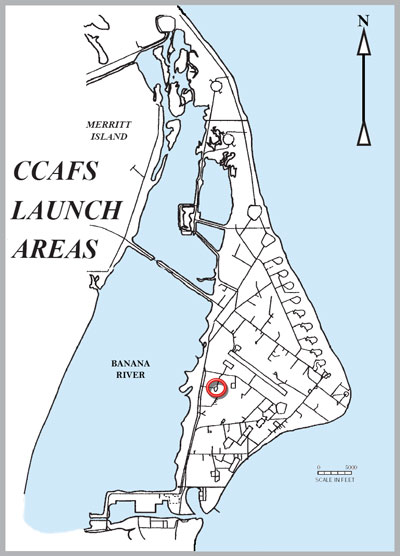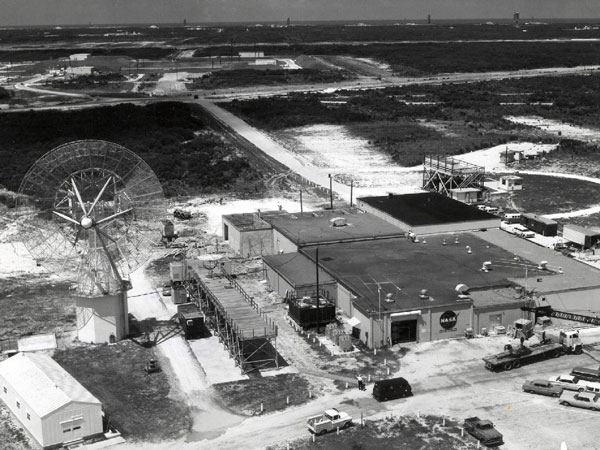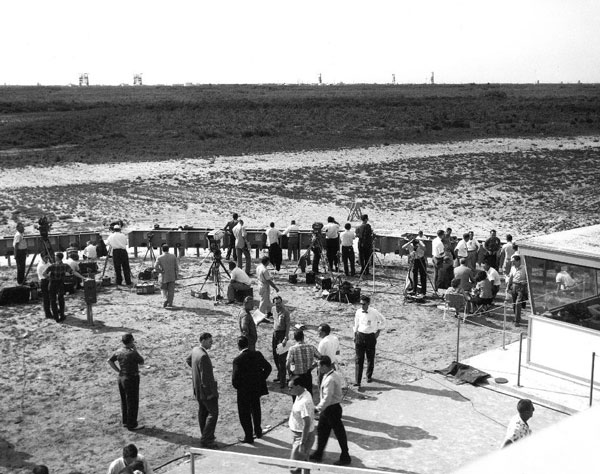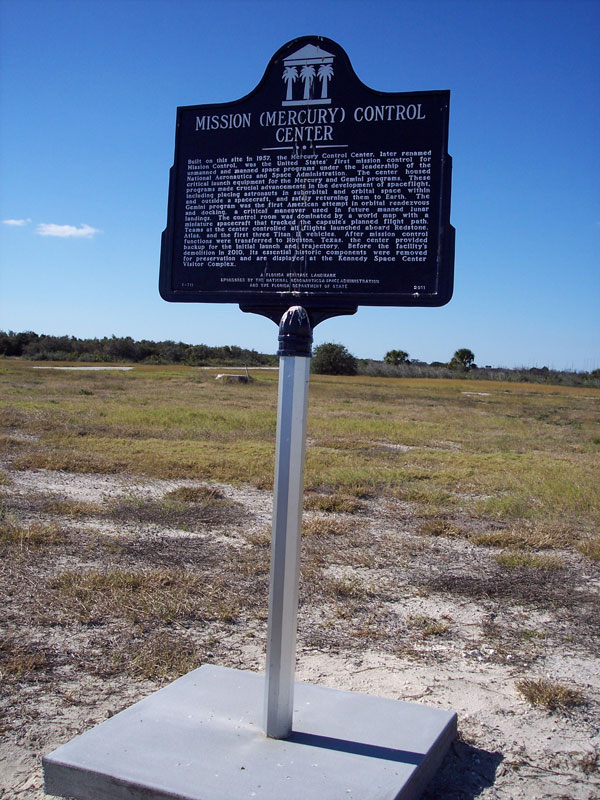
Photo Gallery
History
The Mercury Control Center (later renamed Mission Control Center) was created during Project Mercury as a central control point for the entire mission. The blockhouse on Launch Complex 5/6 was still used as the launch control center, but once the mission took to the air, the Mercury Control facility took over to coordinate all aspects of the flight. Mercury Control was later renamed Mission Control when the Gemini Program got underway.
An adjoining area just outside the Mercury Control building came to be known as Press Site 2. So much public attention was focused on the manned missions, that every press organization was clamoring for permission to set up a camera or station a reporter close to the action. This press area was chosen because of its immediate proximity to the center of information, the Mercury Control building.
The press site had a semicircular ground area lined with telephone connections, an elevated platform for cameras, and a small building called the “fishbowl” which served as the public affairs control point for the press site. This press site continued in operation long after the Mercury and Gemini programs had wrapped up. It was perfectly situated a safe distance from Launch Complexes 17, 19, 36, and other complexes on ICBM Road.
Complex Demolition
The Mercury Control complex was demolished in 2010 and a historical marker (text below) was approved at the 12 October 2010 meeting of the Florida Historical Marker Council, Division of Historical Resources, Florida Department of State.
The press site “fishbowl” is the only structure remaining from those early days of manned spaceflight. The adjacent alligator pond, which was a favorite of the attending press, is obscured by high underbrush and no longer visible.
Related Pages:
More Cape Canaveral FacilitiesHistorical Markers
MERCURY (MISSION) CONTROL CENTER
Built on this site in 1957, the Mercury Control Center, later renamed Mission Control, was the United States’ first mission control for unmanned and manned space programs under the leadership of the National Aeronautics and Space Administration. The center housed critical launch equipment for the Mercury and Gemini programs. These programs made crucial advancements in the development of spaceflight, including placing astronauts in suborbital and orbital space within and outside a spacecraft, and safely returning them to Earth. The Gemini program was the first American attempt in orbital rendezvous and docking, a critical maneuver used in future manned lunar landings. The control room was dominated by a world map with a miniature spacecraft that tracked the capsule’s planned flight path. Teams at the center controlled all flights launched aboard Redstone, Atlas, and the first three Titan II vehicles. After mission control functions were transferred to Houston, Texas, the center provided backup for the initial launch and trajectory. Before the facility’s demolition in 2010, its essential historical components were removed for preservation and are displayed at the Kennedy Space Center Visitor Complex.
A FLORIDA HERITAGE LANDMARK
SPONSORED BY THE NATIONAL AERONAUTICS AND SPACE ADMINISTRATION
AND THE FLORIDA DEPARTMENT OF STATE
F-711 2010







